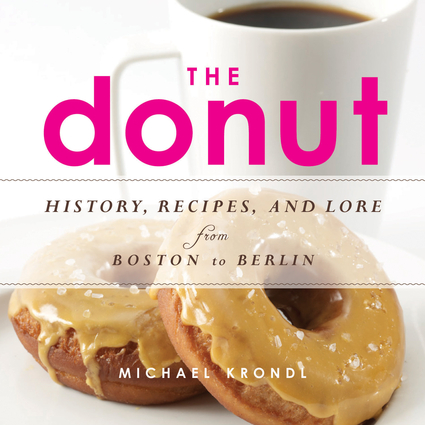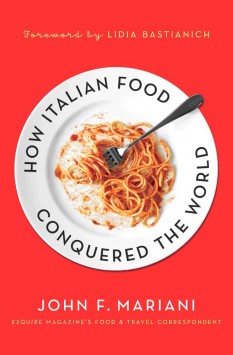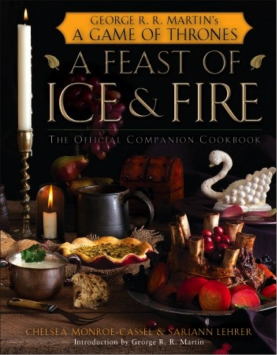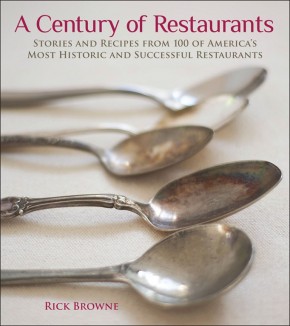The DonutHistory, Recipes, and Lore from Boston to Berlin
A captivating guide to the delectable dessert, culinary historian. An entertaining social history of the donut throughout the ages and from around the world.
The love for the donut in the United States is longstanding and deep-rooted. Gourmet donut shops have popped up in trendy neighborhoods across the country and high-end restaurants are serving trios of donuts for dessert, while Dunkin’ Donuts, Krispy Kreme, and Tim Hortons have amassed a devoted following. In this captivating guide to the delectable dessert, culinary historian, chef, and donut lover Michael Krondl has put together an entertaining social history of the donut throughout the ages and from around the world. Among the interesting facts Krondl brings up are the donut’s surprising role, not only as a traditional prelude to Lent, but in Hanukkah and Ramadan as well; the serving of donuts to American doughboys in the trenches of World War I; and the delivery by Red Cross Clubmobiles of essential comforts of home to World War II soldiers such as music, movies, magazines and—what else?—donut machines. Mindful that the information might have readers itching to run to their nearest bakery, Krondl also offers a baker’s dozen of international donut recipes—with accompanying color photos—including those for Chocolate-Glazed Bismarcks with Marshmallow Filling, Nutella Bombolocini, Frittelle di Carnevale, and Dulce de Leche Raised Donuts with a Salty Caramel Glaze, among others.a
Michael Krondl is a food historian, award-winning cooking instructor, food writer, and former chef. His writing credits include Gastronomica, Nation’s Restaurant News, New York Newsday, and Saveur, as well as multiple contributions to The Oxford Encyclopedia of Food and Drink in America. He is the author of Around the American Table, The Great Little Pumpkin Cookbook, Sweet Invention: A History of Dessert, and The Taste of Conquest. He lives in New York City.
Mexican Chocolate Churros
Churros have been around for hundreds of years and maybe even thousands if you include the churro-like recipe in an ancient Roman cookbook attributed to Apicius. The name, however, comes into print only in the late 1800s, and the use may be Latin American in origin. Originally, churro referred to a kind of coarse wool, so perhaps someone thought the rough strands of fried dough looked a little like it. If you’re looking for a little more authenticity, use Ceylon cinnamon, or what Latin American shops call canela, rather than the cinnamon sold in mainstream supermarkets. They aren’t entirely the same spice. These churros are tasty on their own, but if you wish to gild the lily, serve these with a puddle of warm dulce de leche (see recipe p. 131).
Makes about 3 dozen churros
Cinnamon Sugar:
8 ounces (about 1 cup) sugar
2 teaspoons ground cinnamon
Churro Dough:
1¼ cups water
1 ounce (2 tablespoons) unsalted butter
½ teaspoon salt
5 ounces (about 1 cup plus 2 tablespoons) bleached all-purpose flour, sifted
3 tablespoons Dutch process cocoa
½ teaspoon pure vanilla extract
½ teaspoon ground cinnamon
2 large eggs
Oil or shortening for frying
1. Make the cinnamon sugar: In a small bowl, whisk together the sugar and 2 teaspoons cinnamon.
2. Make the churro dough: In a medium saucepan over moderate heat, combine the water, butter, and salt. Bring to a simmer, stirring to melt the butter. Remove the pot from the heat and add the flour, stirring vigorously to fully incorporate it into the liquid. Return the pot to moderate heat and cook the mixture, stirring constantly, until the dough is smooth and no longer sticks to the sides of the pan, about 1 minute. Remove from the heat and let cool 5 minutes.
3. Transfer dough to a food processor. Add the cocoa, vanilla, and ½ teaspoon cinnamon and pulse to incorporate. Add 1 egg and process until completely smooth. Add the other egg and do the same. Scrape the sides and process once more to make sure the mixture is homogenous. Scrape into a bowl, cover with plastic wrap, and cool to room temperature. Chill in the refrigerator. The recipe can be made up to 24 hours ahead to this point.
4. Spoon the dough into a pastry bag fitted with a ½-inch closed star tip.
5. Fry the churros: Line a large baking sheet with several layers of paper towels and place the cinnamon sugar in a wide shallow bowl.
6. Using a deep fryer or a heavy pan, heat at least 3 inches of oil or shortening to 375°F. If you’re not using a deep fryer with a built-in thermostat, check the temperature using a candy or deep-fry thermometer. (See Frying Tips, p.92.)
7. Working in batches (about 6 churros per batch), hold the pastry bag just above the surface of the hot fat and carefully pipe 4- to 5-inch lengths of dough directly into the fat, using a small knife to cut the batter at the end of the star tip if necessary. Fry the churros, turning occasionally, until crispy and cooked in the center, about 3 minutes. When done, transfer to the paper towel–lined baking sheet. Cool to room temperature. Toss the churros gently in the cinnamon sugar.
Get Them While They’re Haute
Though “the Appalachian love child of the soufflé and the croissant”—as GQ described the dough rings in 1996—wasn’t able to satisfy capricious Manhattanites for long, the donut’s sojourn in America’s capital of hype left an impression. In New York, donuts, which had for so long been considered little more than working-class junk food, became the darlings of New York’s manicured media elite. Soon after Krispy Kreme’s arrival, fried dough started showing up on the menus of swanky restaurants.
The upwardly mobile sinker didn’t entirely appear out of a vacuum. There were glimmerings of a donut renaissance as early as 1991, when Gourmet magazine placed an old-fashioned basket of donuts on its cover. Nonetheless, the first yuppie donut can probably be traced to Thomas Keller, who started putting them on the menu at his pricey Napa Valley restaurant in 1994. Keller had just opened up the French Laundry early that summer, and the normally super-meticulous chef was having a little fun. Placing his well-practiced tongue firmly in cheek, he put “Coffee and Doughnuts” on the dessert menu. The dish consisted of a cappuccino semifreddo with “the best cinnamon-sugar doughnuts ever made,” as the reviewer for the San Francisco Chronicle described them.
The smell of frying donuts must have been wafting through the zeitgeist that year, because even as Keller was putting the final touches on his award-winning restaurant in California, Mark Isreal was testing out recipes he would soon sell at his Lower East Side shop in New York. The thirty-one-year-old donut pioneer opened up a little storefront—rather ambitiously called the Doughnut Plant—in September 1994. The original operation was tiny. Initially, Isreal made only twelve dozen donuts a day, which he delivered on his bicycle to only three downtown retailers. In more ways than one, it was a labor of love, an homage to his grandfather who had once owned a bakery in Greensboro, North Carolina. If you put aside the wacky flavors, Isreal’s donuts are in the Krispy Kreme mold; biting into them is like sinking your teeth into a warm, sugary cloud. Though if these are angels, they’re of the fallen variety. What made Isreal’s pastries special was that he applied an artisanal, locally sourced model to his dough rings. He didn’t just deliver his creations on two wheels, he also rode up to the Union Square farmer’s market where he’d buy fresh blackberries, peaches, and other ingredients for many of his creations. The recipe for the dough may have been Grandpa’s, but the glazes were decidedly not. One of his early flavors, the Mary—named after his mother—was appliquéd with edible flowers and glazed with floral essence. For Valentine’s Day, he made a heart-shaped donut with a passion-fruit glaze.
Coming in the wake of these two pioneers and the subsequent Manhattan Krispy Kreme apotheosis, the editors of Food & Wine magazine declared donuts the new “haute junk food” at the end of 1996. Soon enough, you could order bomboloncini (miniature cream-filled yeast-risen dough balls) at New York’s trendy Italian-themed Osteria del Circo, or “drunken” donuts, which came with spiked jam, at the newly opened Maloney & Porcelli. Other haute treats followed, most notably on the menus of Danny Meyer’s influential Union Square Café and its offspring. At Craft, the former Union Square Café chef Tom Colicchio began dishing up toylike stacks of donuts and holes with gooey caramel and chocolate sauce on the side. At Hearth, another restaurant tracing its genealogy to Danny Meyer, apple cider donuts were served with a slick of apple cider glaze and a dollop of whipped cream.
Where yuppies had gone before, the hipsters now followed. In Seattle, Top Pot fired up its fryers in 2002, with an upscale take on the Dunkin’ Donuts model. Their densely cakey sinkers and barely chewy yeast-raised dough rings taste as if someone in the kitchen cares, but they certainly wouldn’t challenge anyone’s donut preconceptions. About the weirdest they go is a spiced chai model.
Other fried dough impresarios have been more off the wall. In the early days of the bacon-dessert fad, Voodoo Doughnuts made a name for itself with its bacon and maple bar, a slab of yeast-raised dough spread with maple frosting and topped with whole rashers of bacon.
And that was one of its tamer flavors. When the Portland, Oregon, company first opened in 2003, they formulated both a Pepto-Bismol and a Robitussin donut—at least until the FDA put a stop to it. (You can’t use medicine as an ingredient in food.) Nowadays the flavors are more sedate: the “blood” in the signature voodoo donut—a cartoonish chocolate-iced doughnut with arms, an iced toothy mouth, and a pretzel stick in its belly—is just plain old raspberry jelly; the triple chocolate penetration contains such ho-hum ingredients as Cocoa Puffs. There is however a product that still makes Voodoo unique. Undoubtedly taking a cue from all the thousands who have served Krispy Kremes at their wedding, Voodoo offers legal weddings. If you pony up $325 for the deluxe wedding package, you get the ceremony, coffee and donuts for forty, and a donut centerpiece with the bride’s and groom’s names inscribed in the icing. And they’ll even throw in free parking!
Over the last few years, hip donut shops have sprouted from sea to shining sea. In Philadelphia, Federal Donuts has been serving cake donuts scented with lavender and others filled with peanut butter and jelly; in Chicago, the Doughnut Vault boasts lemon poppy seed and pistachio; Denver’s Glazed and Confuzed Doughnuts has made a valiant effort to push the envelope with a Red Bull–spiked sinker decorated with Pez candy and another spread with chipotle chocolate ganache and sprinkled with tortilla chips. In Austin, Gourdough’s has busted the envelope wide open with the likes of the Boss Hog donut, mounded with pulled pork and potato salad, then drizzled with honey barbecue sauce.
In 2013, French pastry chef Dominique Ansel started serving his signature “cronuts” at his eponymous Soho bakery. The hype generated by these custard-filled donuts made with croissant dough led to anxious lines forming as early as dawn. I found it hard not to recall P.T. Barnum’s famous line about his clientele. He was right, there really is one born every minute.
As in ancient Rome, our donut culture may be reaching a point of orgiastic decadence, which sooner or later will implode from sheer excess. Can a civilization survive the Luther Burger, a cheeseburger served on a split Krispy Kreme? Or a deluge of copycat cronuts? Perhaps not, but maybe once the Vandals (or the nutrition police) have razed and pillaged the nation’s Dunkin’ Donuts and Krispy Kremes, a time will come when we can all rediscover the joy of a simple cider donut. Or maybe not.
And anyway, by the time you read this, the hipster donut craze may be no more than an ironic footnote in the history of the donut’s rise to world supremacy. Pulled pork, donuts, and Pepto-Bismol will be eaten separately, as three sequential courses, not consumed simultaneously in one donut recipe. More likely though, is that the artisanal sinker will join the millions that are being fried right now by Dunkin’ Donuts, Krispy Kreme, Tim Hortons, and their like. And maybe that’s just as well. As far as I’m concerned, when it comes to donuts, more is more.











Leave a Reply